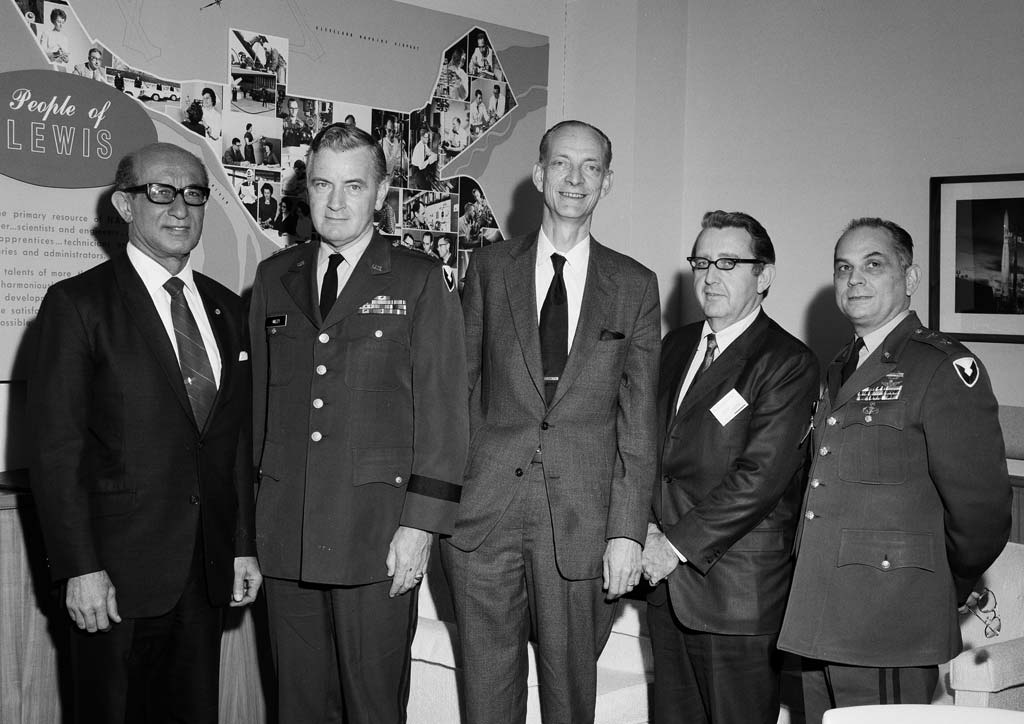
Center Director Bruce Lundin Leads a Selected Aeronautics Program Tour
Bruce Lundin, center, became the Center Director at the National Aeronautics and Space Administration (NASA) Lewis Research Center in 1969. Lundin was one of the crucial figures at Lewis for nearly 35 years. His work on engines for aircraft, missiles, and rockets helped push the nation’s aerospace industry forward in the 1940s and 1950s. In the late 1950s he developed a document that outlined the National Advisory Committee on Aeronautics’ (NACA) future role in the new field of space flight. Throughout the 1960s Lundin oversaw all of the center’s development work, including launch vehicles such as Centaur and Agena. After a brief transfer to NASA Headquarters in 1968, Lundin was named Director of Lewis Research Center. Lundin’s years as Center Director were full of turmoil. Starting in 1967, the laboratory had begun returning to aeronautics. Significant gains would be made in noise reduction, energy efficient engines, and improved compressors. NASA’s budget was shrinking, however, as the Apollo Program wound down. By 1971 the Lewis staff was reduced by 700. Lundin immediately began seeking new areas of research for the center. Lewis undertook a wide range of alternative energy programs during the era’s oil embargo. These included solar energy panels, wind energy, electric automobiles, and the Brayton engine. From left to right, Lewis Deputy Director Eugene Manganiello, General William Miley, Lundin, Dr. R. Dilloway, General John Klingenhagen. General Miley had organized and led the Army’s first parachute unit in 1940. During World War II he was promoted to Brigadier General and Major General where he led the 17th Airborne Division. He taught at Fort Benning after the war and led Army forces in Alaska. General Klingenhagen served in three wars and was, at the time of this photograph, the commanding general for the Army Aviation Systems Command.
- X



























